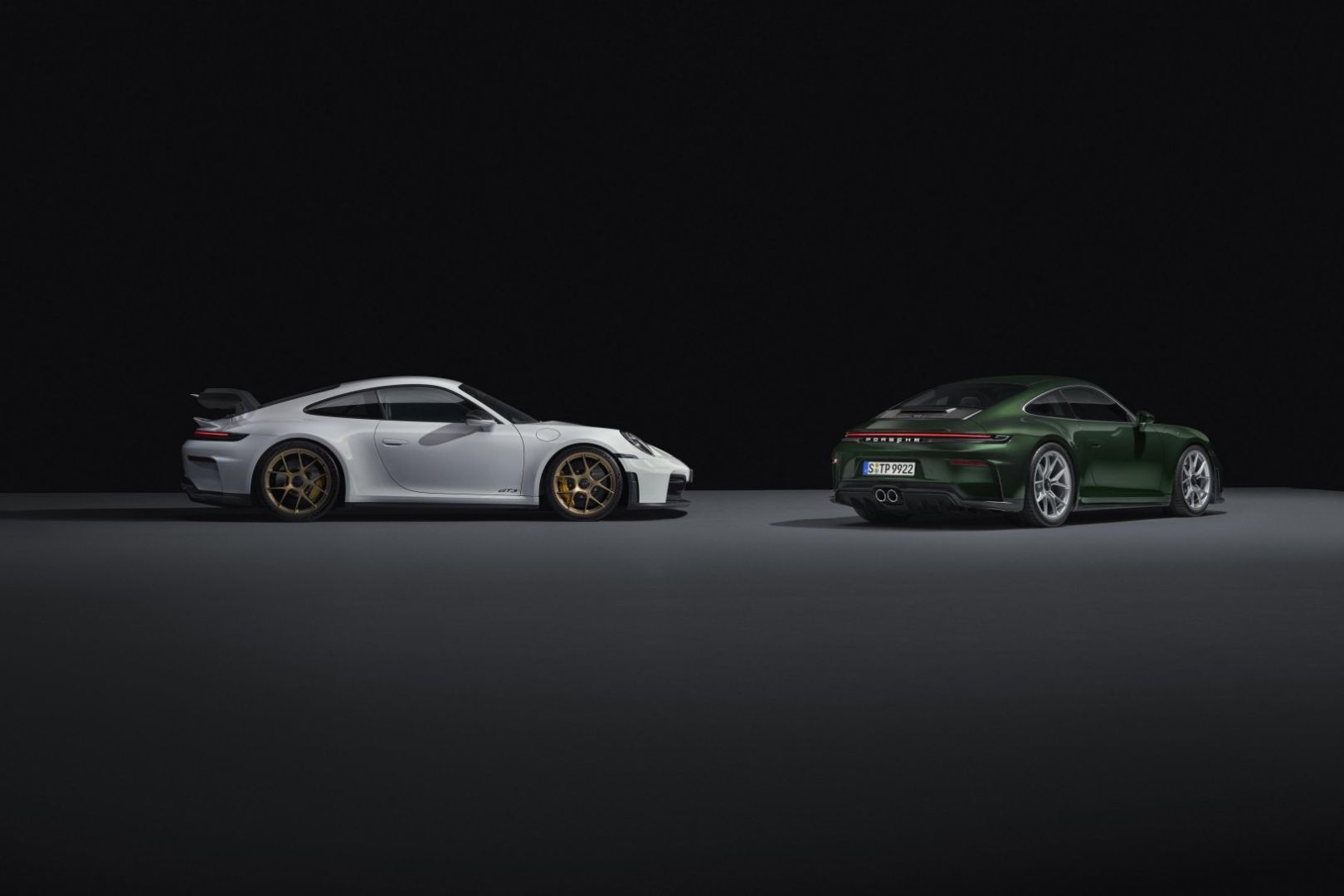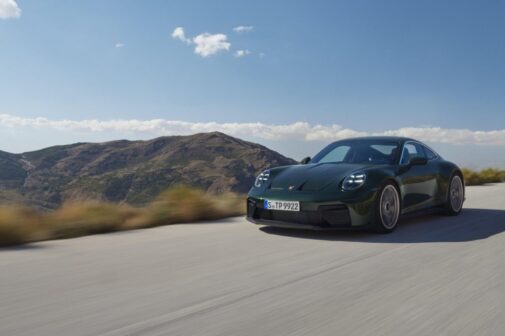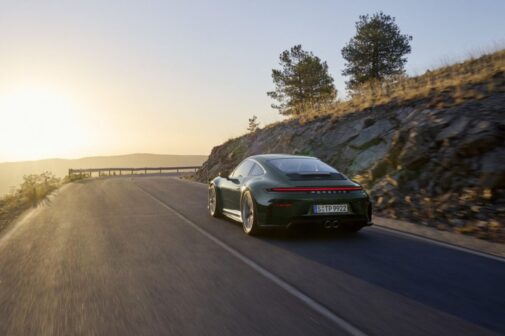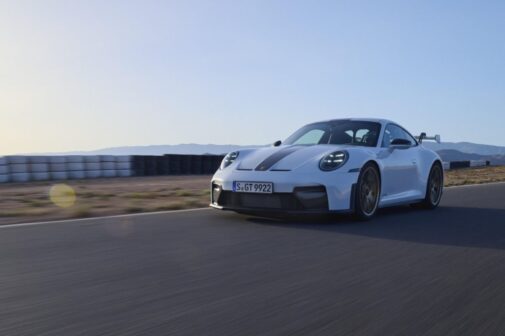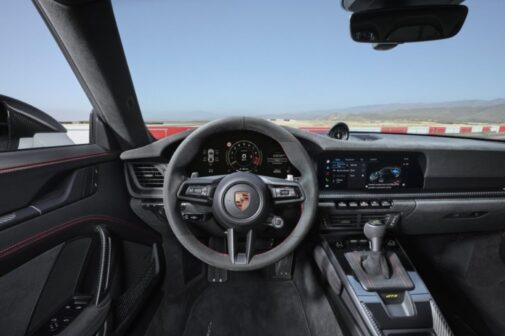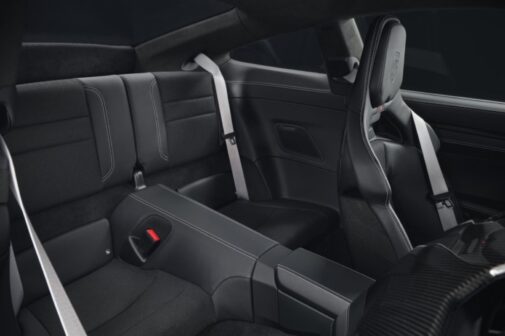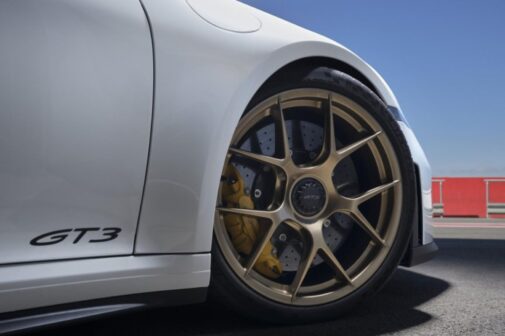In my early days, there was this small, obscure game called Need for Speed, particularly Need for Speed Most Wanted. It featured a list of some 15 drivers against whom we had to race for ultimate glory. Bah! For the most part, it was a fun little experience.
Now, before you launch a full-scale armada against me, truth be told, this game constituted the best 70 hours of my life.
So, let me tell you my most memorable moment. There is one scene where a certain someone 10th on the list came flying from under a TRUCK! Those reddish-yellow flames, and bolted side fairings reminded you of the impending race. So, what was this beast of a car that had me mesmerised forever? It was a Porsche, a Porsche Cayman S to be exact. That feeling and slight shiver stuck around. I felt it again when I saw this.
The 2025 Porsche 911 GT3 (technically 992.2, but hey, 911 sounds cooler!). Take a look at her initially, and she will feel familiar with the touch, the sight, and that feeling. She follows the debut of the updated 911 earlier this year, but this twin is hotter, faster, and has more tricks up her sleeve than you would be led to believe.
The Spec Sheet to Desired – Performance Figures
At its heart, the 911 GT3 retains the 4.0-litre naturally aspirated flat-six engine, producing 503 bhp and 46 kgm of torque—an engine that revs up to 9,000 rpm! The car, however, borrows quite a bit from its previous iteration and the GT3 RS, including updated camshafts and revised cylinder heads.
Porsche continues to offer drivers a choice between two transmissions in the 911 GT3, staying true to the brand’s history of catering to purists. The six-speed manual gearbox remains a favourite for those purists, and the seven-speed PDK (Porsche-Doppelkupplungsgetriebe), more simply known as a dual-clutch transmission.
In both versions, Porsche has shortened the final drive ratio, resulting in quicker acceleration across the board. The PDK model completes the 0–100 kph sprint in just 3.4 seconds, while the manual clocks in at 3.9 seconds. The top speed is rated at 312 kph for the manual and 317 kph for the PDK, slightly lower than its predecessor due to the added emissions norms, but remains well within the supercar kingdom.
Stopping power in the new GT3 remains among the best in its class. The standard GT3 comes equipped with large steel rotors, but buyers can opt for Porsche’s carbon-ceramic brakes (PCCB) for even better performance. The ceramic brakes not only provide excellent fade resistance under repeated hard braking but also reduce the unsprung weight, which benefits overall handling. These high-performance brakes feature massive 410 mm front and 390 mm rear discs, offering both precise stopping control and endurance for track days.
Variants – Know the Difference Between
Porsche offers two distinct versions of the 911 GT3: the standard model with a fixed rear wing and a more understated GT3 Touring.
The standard GT3 is the more track-focused variant, featuring all the aerodynamic upgrades for maximum downforce and stability at high speeds. The fixed rear wing, along with the redesigned diffuser and underbody aero elements, will help the GT3 stick to the track!
The Touring variant, on the other hand, provides a more subtle appearance by removing the fixed rear wing and instead, opting for an active rear spoiler reminiscent of the silhouette of the classic 911.
Exterior Changes – Same Old Same Old
Subtle yet significant changes define the exterior of the unveiled 911 GT3.
The front, for example, features a redesigned bumper with a larger air intake and a new lip spoiler, both of which should improve airflow and cooling for the engine and brakes.
New fins on the undertray enhance downforce by redirecting airflow under the car. The headlamps now feature four distinct LED slits, giving the GT3 a refreshed look, while the redesigned rear diffuser and updated rear wing help to maintain balance and stability at high speeds.
In terms of weight savings, the GT3 remains one of the lightest in its class. Porsche has introduced lighter aluminium wheels as standard, reducing unsprung mass by 1.5 kg. And for the purists again, Porsche offers even greater reductions—the Weissach package (available for both variants) is now available for the first time on the standard GT3.
This package includes extensive use of carbon fibre-reinforced plastic in areas like the roof, rear wing, exterior mirror shells, and anti-roll bars, saving valuable kilograms. Magnesium wheels, which shed an additional 9 kg, are also available as part of this package. The end result is just shy of 1,500 kg (1,420 kg to be exact!).
Stepping Inside – Probably Will Not Come Out
The interior of the 2025 911 GT3 remains a blend of Porsche performance and minimalism. That is pretty much it!
The new digital instrument cluster, borrowed from the Carrera model, replaces the traditional analogue dials, giving drivers access to clear, real-time information during performance driving. The inclusion of a “Track Screen” mode allows the display to show only essential data, such as lap times and gear position, reducing distractions when driving at the limit.
Now, here is an interesting change: the seats! Standard models come with leather and Alcantara-covered sports seats, but drivers can opt for carbon-fibre-reinforced plastic (CFRP) bucket seats, which feature a folding backrest to allow access to the rear.
However, Porsche has taken the Touring to the next level with rear seats now available, making the car a visibly practical choice for those who want to enjoy high-performance driving. Additionally, buyers can choose the 18-way power-adjustable Active Sport Seats if they prefer more comfort and adjustability over the lightweight buckets.
The 2025 Porsche 911 GT3 seems to deliver on every front; one, It stays true to its heritage while also embracing the advancements required in today’s automotive world. Two, It comes with rear seats! Still a shocker! Three, It has reduced the weight, albeit marginally; yet in this division, every kilogram counts.
Fourth, the price of this—well, this is where things get a little hard to digest. It is 40,000 USD more than its 2024 iteration, now priced at 224,495 USD or about Rs. 1.8 crore. Will this come to India? Only time will tell.





